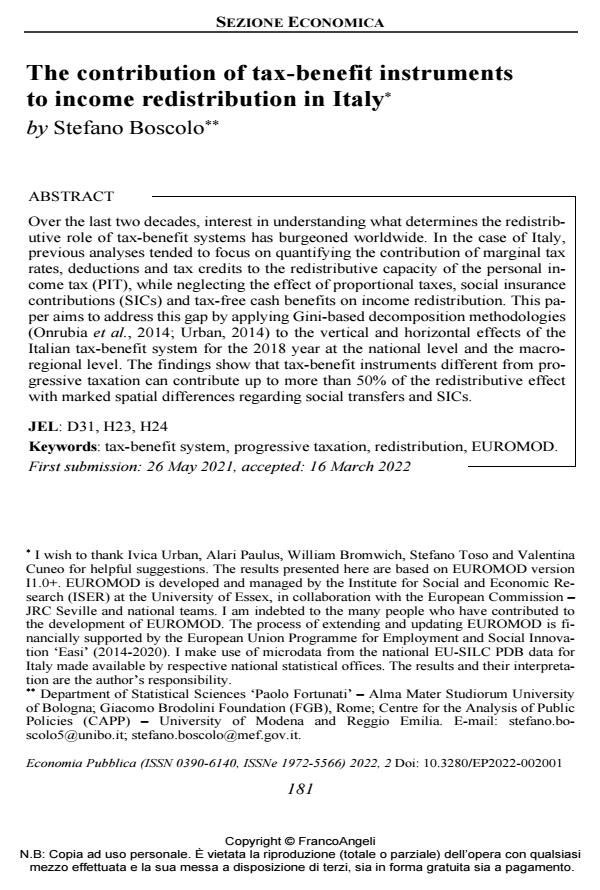The contribution of tax-benefit instruments to income redistribution in Italy
Journal title ECONOMIA PUBBLICA
Author/s Stefano Boscolo
Publishing Year 2022 Issue 2022/2
Language English Pages 51 P. 181-231 File size 2028 KB
DOI 10.3280/EP2022-002001
DOI is like a bar code for intellectual property: to have more infomation
click here
Below, you can see the article first page
If you want to buy this article in PDF format, you can do it, following the instructions to buy download credits

FrancoAngeli is member of Publishers International Linking Association, Inc (PILA), a not-for-profit association which run the CrossRef service enabling links to and from online scholarly content.
Over the last two decades, interest in understanding what determines the redistributive role of tax-benefit systems has burgeoned worldwide. In the case of Italy, previous analyses tended to focus on quantifying the contribution of marginal tax rates, deductions and tax credits to the redistributive capacity of the personal income tax (PIT), while neglecting the effect of proportional taxes, social insurance contributions (SICs) and tax-free cash benefits on income redistribution. This paper aims to address this gap by applying Gini-based decomposition methodologies (Onrubia et al., 2014; Urban, 2014) to the vertical and horizontal effects of the Italian tax-benefit system for the 2018 year at the national level and the macroregional level. The findings show that tax-benefit instruments different from progressive taxation can contribute up to more than 50% of the redistributive effect with marked spatial differences regarding social transfers and SICs.
Keywords: tax-benefit system, progressive taxation, redistribution, EUROMOD
Jel codes: D31, H23, H24
- The Italian Treasury Dynamic Microsimulation Model (T-DYMM): Data, Structure and Baseline Results Riccardo Conti, Michele Bavaro, Stefano Boscolo, Elena Fabrizi, Chiara Puccioni, Ottavio Ricchi, Simone Tedeschi, in SSRN Electronic Journal /2023
DOI: 10.2139/ssrn.4546893
Stefano Boscolo, The contribution of tax-benefit instruments to income redistribution in Italy in "ECONOMIA PUBBLICA " 2/2022, pp 181-231, DOI: 10.3280/EP2022-002001